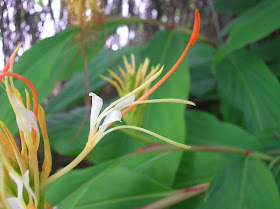



PHASEOLUS CARACALLA (sin. Vigna caracalla)
Origen: Centro y Sudamérica (caracalla significa procedente de Caracas)
Es una trepadora de la familia de la judía verde (Phaseolus vulgaris)
Las flores son olorosas y tienen forma de caracol.
Se reproduce por esquejes o semillas (sin éxito por el momento en Recregarden)
Sensible a las heladas. Si no son muy fuertes la planta suele rebrotar de las raíces.
English version:
Origin: Central America and South America (caracalla means coming from Caracas)
Common name: snail vine, snail bean
Fast growing twinning vine. It´s a close relative of common bean (Phaseolus vulgaris)
Flowers are fragant and resemble a snail.
Propagation: by cuttings or seeds (no succes in Recregarden yet)
Frost sensitive. If the frosts are not too strong the plant resprout from the roots.
Actualizado 21/09/2014
Actualizado 21/09/2014



















































